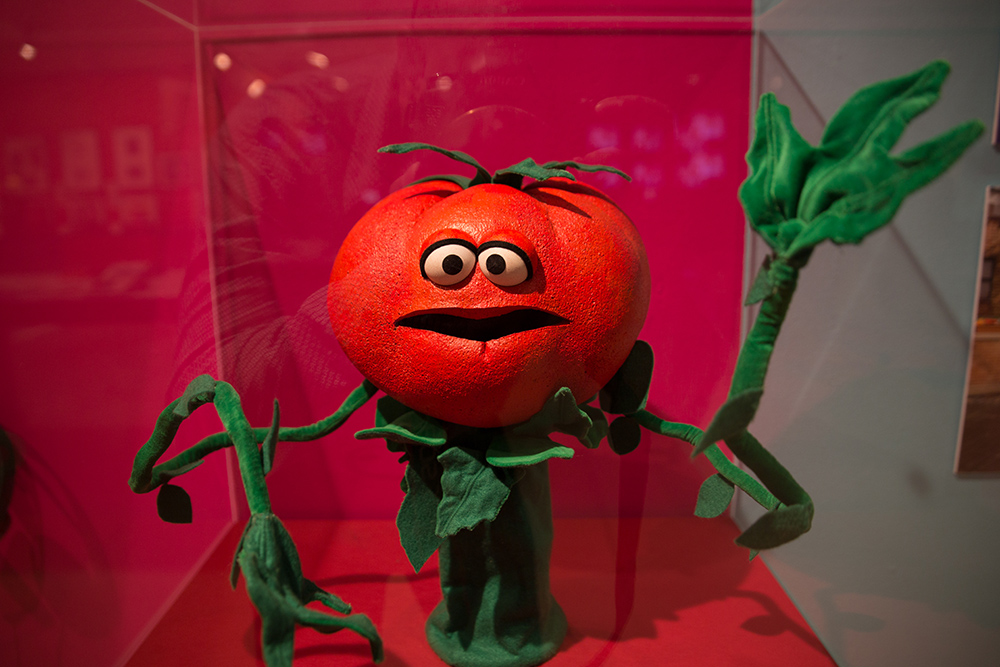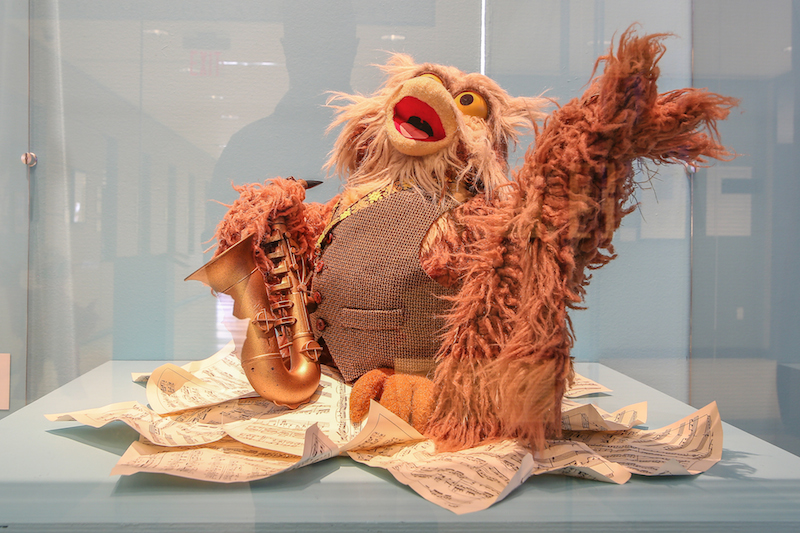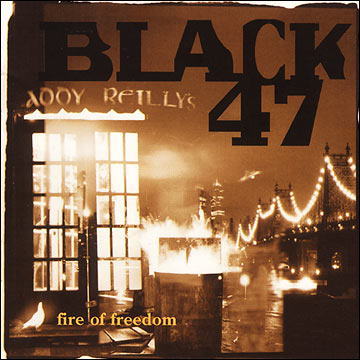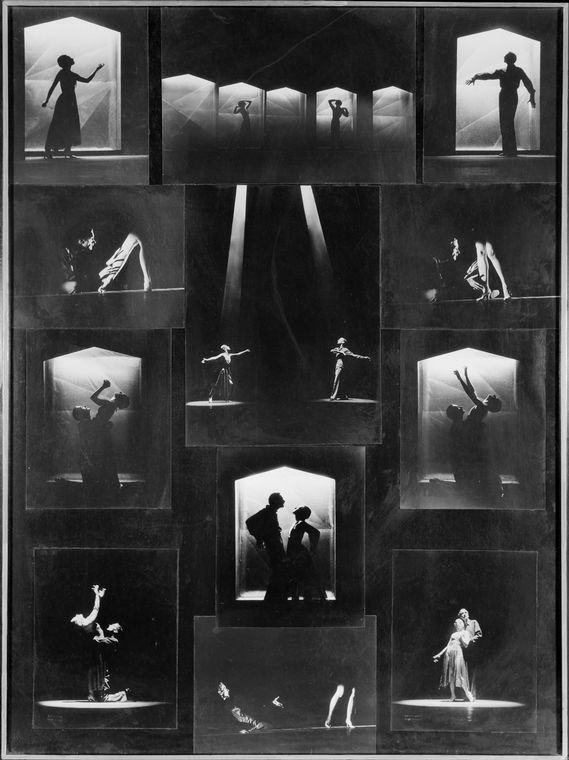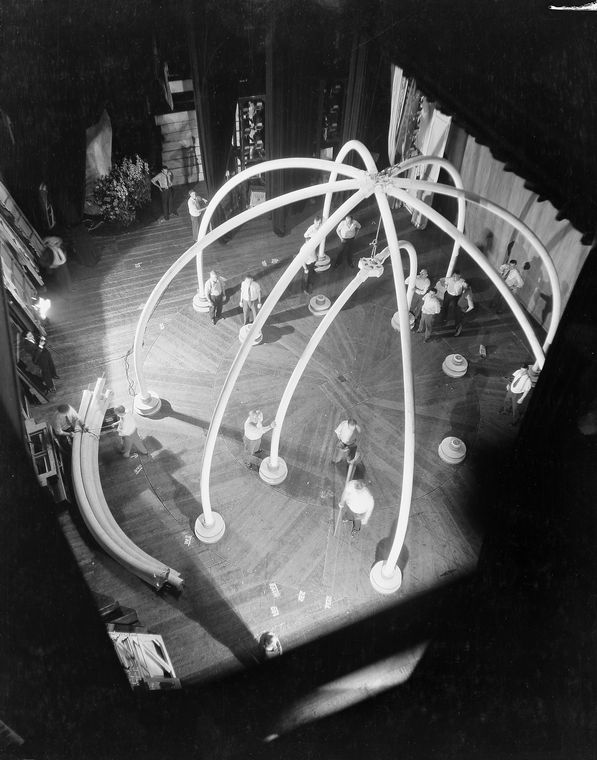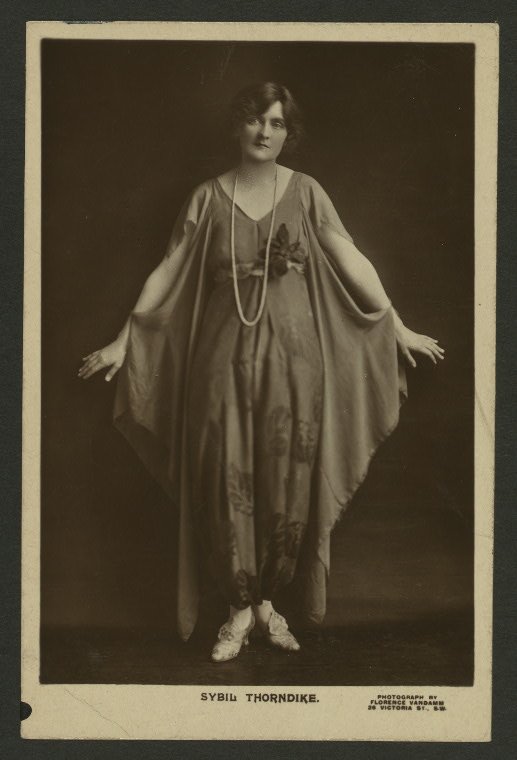Sesame Street at LPA: About That Tomato...
by Barbara Cohen-Stratyner
October 14, 2014
I love collaborative exhibitions because I learn so much about our partners. Working with Susie Tofte, the archivist of the Sesame Workshop and curator of the exhibition, I learned about the Workshop’s outreach programs for families dealing with the challenges of military service and incarceration. Now that the exhibition is available for viewing, I see that section’s impact on visitors who expected only fun, children’s content.
In Praise of Hoots
by Barbara Cohen-Stratyner
September 25, 2014
At "Somebody Come and Play" you can see Big Bird, Cookie Monster, Bert and Ernie, the Count, Snuffy, and Oscar up close. And, by my special request, Hoots.
Subway Series at New York City Libraries This September
by Kelly Yim
August 20, 2014
It’s not often that you can see a Grammy Award-winning group perform live for free, right in your own neighborhood—so be sure to catch St. Luke’s Chamber Ensemble next month at your local library.
Punk and the [Anti-]Prom
by Barbara Cohen-Stratyner
June 20, 2014
Every year, my interns and I have the pleasure of working with the students at the High School for Fashion Industries in conjunction with the Library’s wonderful Anti-Prom projects, managed by our colleagues in Teen services. Past themes have included Goth, Monsters, Super Heroes, and Glam. This year was Punk.
Archiving Amram: The Beauty of Now
by Evan Leslie, New York Public Library for the Performing Arts, Dorothy and Lewis B. Cullman Center
April 24, 2014
In the following blog post David Amram shares his hopes for the upcoming programs.
Beatles Overload? 5 Beatlesque Bands You Should Hear
by Shawn Donohue
April 23, 2014
You can't help it, you are just so jazzed that it is The Beatles' 50th Anniversary of their appearance on the Ed Sullivan Show that you've grown your moptop, dusted off your Hofner Bass and even broke out your copy of The Rutles.
You have assuredly already
David Amram's New York
by Evan Leslie, New York Public Library for the Performing Arts, Dorothy and Lewis B. Cullman Center
April 23, 2014
Join Amram, plus author Bill Morgen and sociologist Audrey Sprenger, for a walking tour of the Lincoln Center campus and other nearby cultural landmarks that have influenced his life and music. David has many inspirational and charming stories to share.
Turn Left at Greenland: The Beatles Meet the Press
by Barbara Cohen-Stratyner
April 16, 2014
The Beatles were not only wonderful songwriters and singers, but they were experts at peppering their press conferences with wit—and avoiding real answers to meaningful questions.
I Read the Journal-American Today, Oh Dear: Beatles Files Part 2
by Karen Burke
April 1, 2014
I have been working in the Music Division since 1997 and have been a Beatles fan since I was ten years old. So, over the years, I have made an effort to keep track of any new Beatles’ related material that we acquire. The Music Division, like the theatre division, also has extensive clipping and photo files.
Great Albums You Might Have Missed: Black 47's Fire of Freedom (1993)
by Shawn Donohue
March 5, 2014
I was sitting shotgun on DJ duty during a long volleyball road trip back in high school when I put on a new tape (yes, cassette days) that I was loving of a band I had recently seen playing live at SUNY Albany (yes, pre Internet days). The group was Black 47, the album Fire of Freedom . After about 30 seconds of "Livin' In America" my witty coach who
The Holy Grail of the Percussion World, Part 1
by Barbara Cohen-Stratyner
February 4, 2014
William F. Ludwig himself put it best when he said, “On February 9th, 1964, a new musical event burst from the TV screens across America. The Beatles had arrived, featuring Ringo Starr and his Ludwig Black Oyster drums. Literally overnight everyone wanted a drum set like Ringo’s. The drum boom was born!”
Finding a Life at The New York Public Library: Emily Dickinson, the Avid Music Collector
by George Boziwick
December 10, 2013
December 10th is the birthday of Emily Dickinson (1830-1886), a beloved poet who in her youth was a talented pianist and active music collector. The collections of The New York Public Library serve to illuminate those interests and activities in a variety of ways.
Archives & Special Collections,Amherst College, used with permission.In 1846, Emily Dickinson's second cousin, Olivia Coleman, wrote to Emily from Philadelphia: "We discovered a new Music Store, and I purchased the song 'I'm alone—all alone,' for I am truly alone without
Those Mysterious Shadowy Dancers
by Barbara Cohen-Stratyner
December 9, 2013
This post answers a question about the image that the Library’s web page has been using when it highlights the Vandamm exhibition, Pioneering Poet of Light. I was thrilled when the web editors selected it, since it illustrates the title so well. So, here’s an extended caption, with musical accompaniment.
Three’s a Crowd was a revue, presented in the 1930-1931 season. Like The Band Wagon in last week's post, it was choreographed by the brilliantly innovative Albertina Rasch and paired a young Broadway/vaudeville veteran with a European ballet
"What Do You Say Up There?" Shooting the Set from Above
by Barbara Cohen-Stratyner
December 2, 2013
The most recent post looked at Vandamm photographs of dance rehearsals from footholds on the catwalks, ladders and rigging stations of Broadway theaters. This one focuses on their photographs of the stage crew setting up for those rehearsals.
Like all theater photographers, they depended on the crews to set scenes, move furniture and props, and adapt lighting. But, as you can see from the portraits and action shots, the Vandamms esteemed their IATSE colleagues and photographed them with the same respect as the performers. There are portraits of individuals or
Or She to Hecuba... Vandamm's Greek Plays
by Barbara Cohen-Stratyner
September 17, 2013
Thorndike's 1919 production of The Trojan WomenDuring the War, Florence Vandamm had not lost her skill at showing character and movement. Her career was, in many ways, redefined by the portraits commissioned by Suffragist actress Sybil Thorndike in 1919. She photographed the cast of the 1919-1920 Holborn Empire (Theater) season of classical Greek and modern plays presented by Sybil Thorndike and Lewis Casson.
The images were used for press reproduction and in the season program. Thorndike chose to present the Gilbert Murray translations of The Trojan Women and
A Vandamm Postcard from London
by Barbara Cohen-Stratyner
September 16, 2013
Before leaving London in 1923, Florence Vandamm photographed Sybil Thorndike in at least five additional roles. Thorndike was known for her ability to play comedy and tragedy, so there was a wide range. She appeared in the suffrage play Jane Clegg for Edith Craig's Pioneer Players, 1922, reminding her audience that conditions remained despite the political victory. Thorndike also played in and presented modern comedies, such as Advertising April in 1923.
Theater promotional postcards were re-emerging after World War I restrictions on dark room materials.
Florence Vandamm
by Barbara Cohen-Stratyner
August 5, 2013
Perhaps the most widely published and least understood visual record of 20th century performing arts, the output of the Vandamm Studio has largely been utilized only as illustrative backdrop for the retelling of Broadway history. The prints, contact sheets, and negatives of theater, music and dance in London (1908–1923) and New York (1924–1963) are among the Library for the Performing Arts's most requested treasures.
Few are aware that the visionary photographer and portraitist who lent her talent and name to the studio was a woman and one who opened her
La veuve Boivin: A Woman at the Beginning of the Music Publishing Industry
by Bob Kosovsky, Librarian, Rare Books and Manuscripts, Music Division, New York Public Library for the Performing Arts, Dorothy and Lewis B. Cullman Center
April 12, 2013
Consider this a late contribution to this year's Womens' History Month.
When most people think of the involvement of women in music they probably think of performers or composers. To be sure, women performers have been at the forefront of music for centuries, and in recent years awareness of women composers has grown enormously, particularly with those from the twentieth century. But there is at least one other music-related field in which women have made a significant mark: publishing.
Between the seventeen-century to the middle of the nineteenth-century,
Art and Low Vision: The Sound of Monet’s Weeping Willow Series
by Fotis Flevotomos
March 28, 2013
Hear the audio version of this blog post. Narration: Kevin Gillins. Music performed by La Capella Reial de Catalunya; Le Concert des Nations; conductor: Jordi Savall.
I am looking at Monet's Weeping Willow series and want to describe these works to people who cannot see. I think music, with its sensual and dramatic language will most elegantly convey the power of these works.
In 1791, Mozart composed in Vienna parts of what is now known as the Requiem Mass in D Minor (K. 626).
New Mendelssohn Discoveries in the Music Division
by Bob Kosovsky, Librarian, Rare Books and Manuscripts, Music Division, New York Public Library for the Performing Arts, Dorothy and Lewis B. Cullman Center
January 31, 2013
Felix Mendelssohn's signature from Drexel 4903It is still possible to discover amazing things in the New York Public Library in 2013, its 108th year of existence. What's even more amazing about this story is that the discovered items have been with the Library since its founding and have gone unnoticed until now. I am happy to write this story in anticipation of February 3, 2013, the 203rd birthday of composer Felix Mendelssohn Bartholdy.
Part of my work in the Music Division involves cataloging scores — not newly published materials, but a portion of the over
 With your library card, it's easier than ever to choose from more than 300,000 e-books on SimplyE, The New York Public Library's free e-reader app. Gain access to digital resources for all ages, including e-books, audiobooks, databases, and more.
With your library card, it's easier than ever to choose from more than 300,000 e-books on SimplyE, The New York Public Library's free e-reader app. Gain access to digital resources for all ages, including e-books, audiobooks, databases, and more.